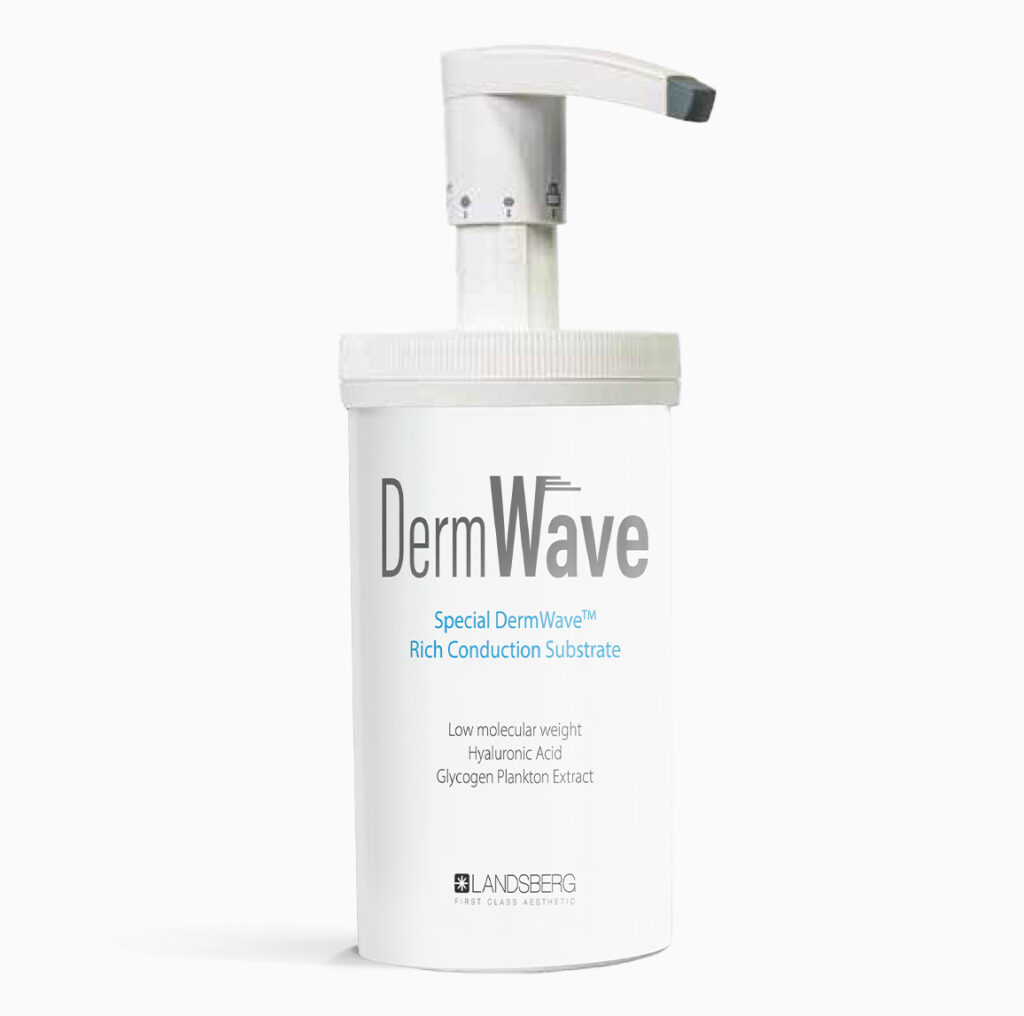The latest generation of volumetric radiofrequency (RF) technology VolumetriQ™ offers precisely controlled, non-invasive facial and body firming treatments. It regenerates and tightens the skin, smoothes wrinkles and lines and sculpts the body, all without downtime or side effects. Ideal for professional aesthetic use.
DermWave™ Pro – VolumetriQ™

Contact substrate
For the best contact and gliding properties.
Ensures optimal adhesion, contact and gliding properties during treatment with the DermWave™ Pro handpiece and guarantees the best treatment results.
Special Rich Conduction Substrate
Has an intensive moisturizing effect and leaves the skin feeling smooth and velvety soft after application.
Dermwave™ Pro Accessories
Accessories and spare parts for the Dermwave™ Pro
Marketing
Benefit from professional marketing materials that effectively showcase DermWave™ Pro facial and body firming treatments in your institute, practice or hotel and provide your customers with the best possible information.